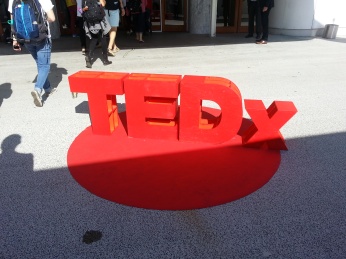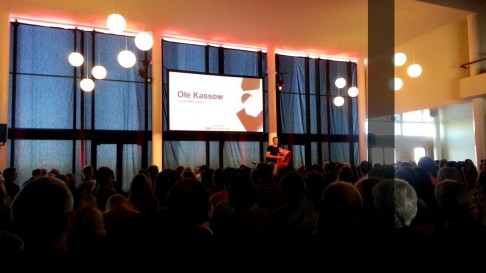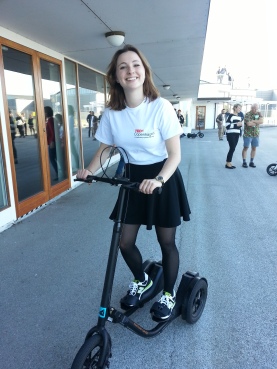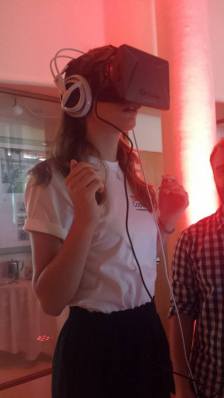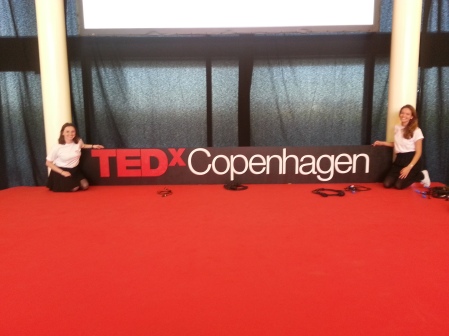Yesterday, I had some of the most wonderful, awe-inspiring experiences I have ever had in my life.
I visited an innovative creative media agency. I hiked a Swedish cliff to a micronation with 17,000 citizens and zero inhabitants. I ate traditional Danish cakes and pastries, ripped my pants, pet a goat, lit a bonfire, picked apples, swung from a tree, and enjoyed a night in the beautiful Swedish countryside.
Okay, I’m getting a little ahead of myself. Let’s start from the beginning.
My class left Copenhagen at 9 a.m. for Malmo, Sweden. Sweden, despite what you might think, is not at all that far from Denmark. For emphasis, here’s a map:

Our first visit took us to Top Dollar, a creative media and strategic campaigns agency that has done client work for companies like Campbell’s, Puma, and Honda. I had little idea of what to expect inside, but as we stepped into the building and entered the office, I have to say that I was more than pleasantly surprised. It felt as if I had stepped into a land of IKEA and Pantone, a space where pure Scandinavian white met captivating hues plucked right from a trendy wall color guide. Sunlight streamed through floor to ceiling windows. It was one of the most beautiful office spaces I have ever seen.


One of the director’s from Top Dollar sat down to talk to us, giving us some details on the agency’s humble origins and creative process. Though they are a business, he said they run the agency in an “artistic” way, and judging just by their works pace, that was certainly true.
An hour and a half drive north through Swedish farmland (which looked quite a lot like Pennsylvania) took us to our next destination – the Land of Ladonia. I know what you’re all thinking – Ladonia? Is that an amusement park? A fair? The Swedish version of Legoland?
Good guesses. But you’re wrong.
To explain Ladonia seems somewhat like an exercise in the impossible, but I’ll do my best for you. Essentially, Ladonia is a “micronation,” a small piece of land that claims to be an independent state, but is not recognized by other states or organizations. Occupying the land where Ladonia claims to exist are a series of driftwood towers called Nimis built by artist Lars Vilks. How Ladonia came to be, and how Nimis came into existence is quite a lengthy story, so I’ll direct you to here and here to get more of the fine details on this peculiar place.
Getting to Ladonia is rough. We hiked a steep, rocky path down the coast, slipping, sliding, and scaling until we finally reached the entrance to Nimis. The passage we entered through that led us down to the water was narrow, a hectic criss-crossing of smoothed down driftwood, uneven in some places, sparse in others. Yet as I managed my way through this labyrinth, not once did I ever feel unsafe. The entire structure is as solid as a rock – not once did I feel it shake, or feel unsteady standing on top of one of the tallest towers. Sure, maybe I accidentally tore a hole in my leggings after sitting in the wrong place – but that was my fault, not the structure’s.
Standing on top of the towers, looking over the water, or even sitting on the coastline’s rocks gave me the most intense sense of euphoria I’d ever felt. I felt as if I had stumbled upon a secret. Pictures do not do this place justice, but it is certainly a place that deserves to be seen.
This slideshow requires JavaScript.
For a constructed work of art – and we must remember, that’s what Nimis is, really – it seemed almost natural, as if it could have been there for one hundred or more years. As a place so removed from civilization, it doesn’t always comprehend right away that someone actually built this structure, that someone created it with his own hands and his imagination. But fortunately, we were actually able to meet the artist, who appeared to do some maintenance just as we were leaving. According to Katherine, my professor, he comes to Nimis every day to keep the structure in tact. Accompanying him were two body guards, who follow him everywhere after he has received threats for his depictions of the Islamic prophet Muhammed in 2007.
Though our conversation with him was short, he said something I thought was quite interesting. After explaining how vandals had tried to burn down the sculpture, he said, “If you’re going to destroy something, destroy art. It almost always adds something to it. And it can always be rebuilt.”
After a strenuous return hike up the cliff and back down to the bus, we headed off to a small country tea house in the nature reserve for tea, coffee, and cakes. This place was too cute for words, and it even had two goats across the yard from where we had tea, which we were welcome to pet, an offer I wholeheartedly accepted. I’m a big animal lover.
With tea completed, we headed off to our hostel in Jonstorp for the night. This place was cozy and homey, and felt more like a bed and breakfast than a traditional hostel. A dinner of freshly caught and smoked salmon and potatoes, followed by a bonfire under a cloudy sky, made for a perfect night to complement a perfect day.
The most wonderful things in the world are often the most difficult to reach. But they are always worth the journey.








